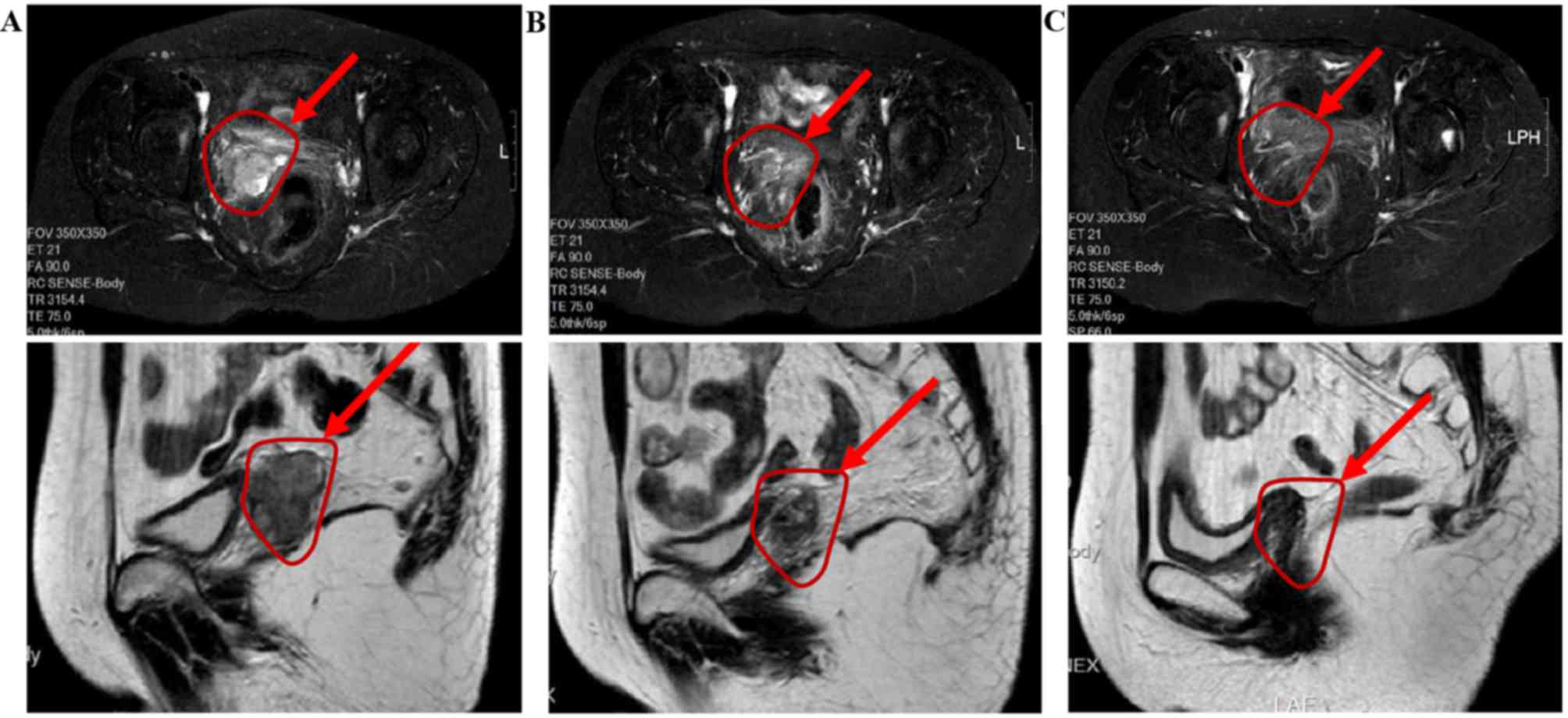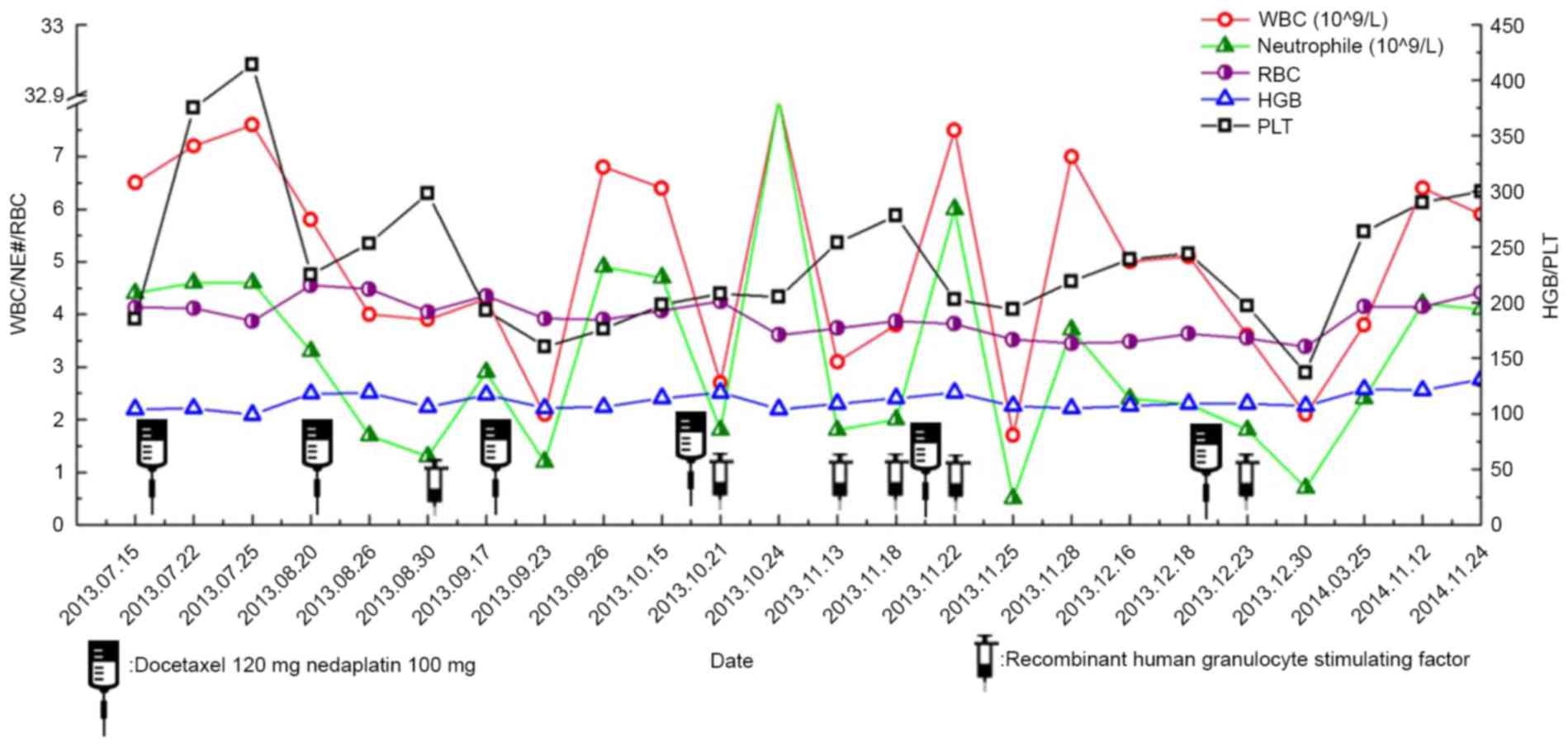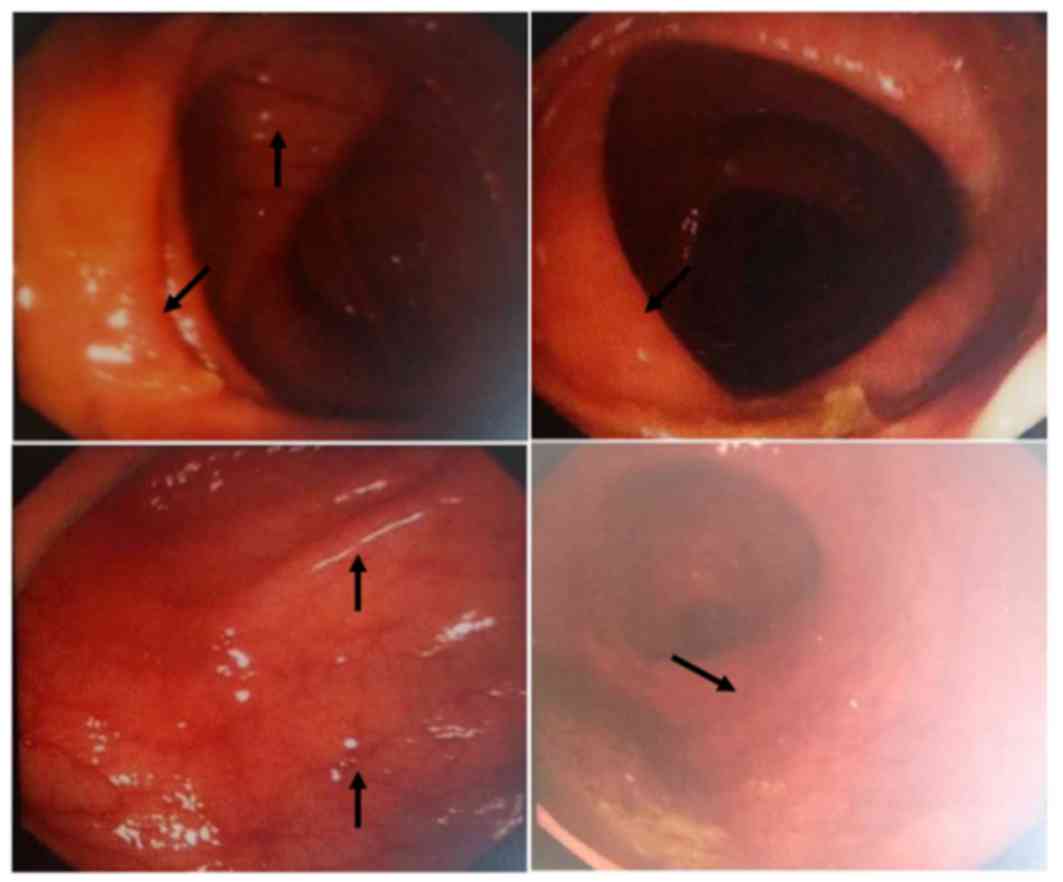Intensity-modulated radiotherapy combined with iodine-125 seed implantation in non-central recurrence of cervical cancer: A case report and literature review
- Authors:
- Published online on: July 26, 2017 https://doi.org/10.3892/ol.2017.6680
- Pages: 4085-4091
-
Copyright: © Feng et al. This is an open access article distributed under the terms of Creative Commons Attribution License.
Metrics: Total
Views: 0 (Spandidos Publications: | PMC Statistics: )
Total PDF Downloads: 0 (Spandidos Publications: | PMC Statistics: )
Abstract
Recurrent cervical cancer is a clinically complex disease that is difficult to treat. There are numerous treatment options, but the results achieved by each are poor. External‑beam radiation therapy of the pelvic lymph drainage area, in combination with intracavitary afterloading or the interstitial implantation of a radiation source (i.e., brachytherapy), are the current standard radiotherapy regimens used in high‑risk clinical targets. However, there are few reports concerning the use of iodine‑125 (125I) seed implantation brachytherapy in recurrent cervical cancer, and the effects of treatment and adverse reactions have not yet been systematically evaluated. In the present study one such case is reported, in which the patient was successfully treated with intensity‑modulated radiotherapy (IMRT) in combination with 125I seed implantation. The patient, a 47‑year‑old woman, was initially diagnosed with International Federation of Gynecology and Obstetrics stage IB1 cervical cancer, and received a radical hysterectomy, left lateral adnexectomy and pelvic lymph node dissection. A follow‑up examination 23 months later revealed vaginal invasion and a solitary lump in the cervical stump with a maximum diameter of 38 mm. The patient was subsequently diagnosed with recurrent cervical cancer and was treated with six cycles of docetaxel and nedaplatin chemotherapy, alongside IMRT and interstitial 125I seed implantation. At the point of manuscript submission, the patient's progression‑free survival time was 33 months and long‑term adverse reactions were acceptable. The response of this patient indicates that 125I seed implantation could be used as a complementary treatment for recurrent cervical cancer and may also prove to be a reliable means for the comprehensive treatment of primary cervical cancer, as the patient had characteristics similar to primary cervical cancer, although this hypothesis could not be confirmed in the present study.















